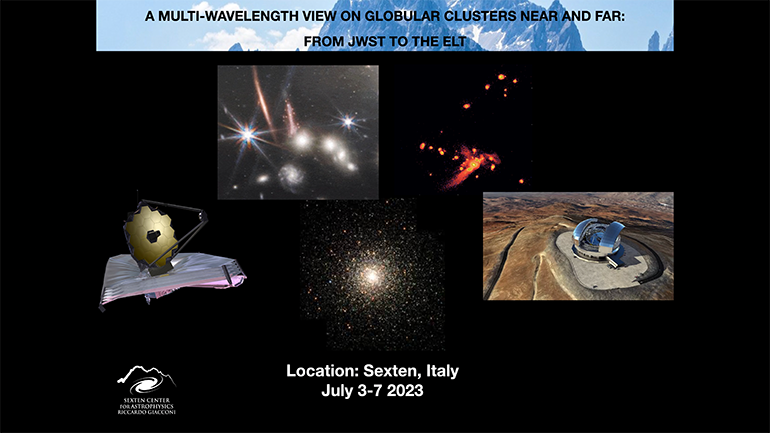A multi-wavelength view on globular clusters near and far: from JWST to the ELT
LOCATION: Haus Sexten - Via Dolomiti 45, 39030, Sexten
DETAILS
The scientific program in available!
The mechanisms that originated globular clusters (GCs) and their multiple stellar populations are far from clear.
Observational studies of GCs in the Milky Way and nearby galaxies have characterized their multiple stellar populations but generally do not provide clear insights about the sites in which they originated.
We are now in a very favourable position to look for key answers at high redshift. Thanks to multi-wavelength facilities (e.g., HST, JWST, ALMA, VLT), we can link the faint, compact systems observed in gravitationally lensed fields with local young clusters and GCs.
Our Symposium will gather astronomers with a variety of expertise (local and high-redshift observations and simulations) to foster the knowledge exchange among participants and deepen our understanding of the physical conditions in which GCs originated.
Performing such a task now is very timely, given the recent results of the Gaia mission, which unveiled the complex assembly history of the Milky Way Halo and its subsystems, and the novel breakthrough results of JWST.
Our discussions will pave the way for the revolutionary discoveries expected in the next decade with the advent of the ELT.
The topics of the conference include the following:
-Proto-GCs in lensed fields at high redshift
-Formation and evolution of GCs in simulations
-How the high-redshift systems evolve into the present-day GCs
-Are the conditions for clustered star formation different at high redshift and in the local Universe?
-Properties of local GCs (ages, masses, chemical abundances) and their multiple populations
The registration is closed!
RELATED FILES
Bus timetable for participants
FEE
300 EurWORKSHOP CODE FOR BUS AND PAYMENT
ORGANIZERS
SOC:
Francesco Calura
Anita Zanella
Antonino Milone
Miroslava Dessauges-Zavadsky
francesco.calura@inaf.it
anita.zanella@inaf.it

